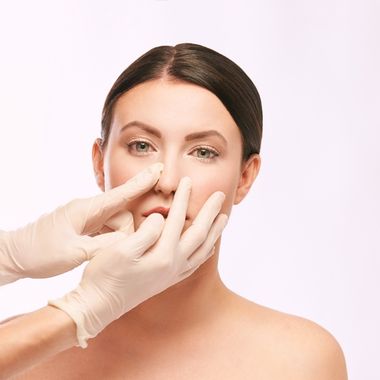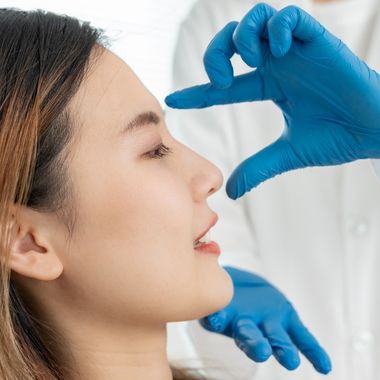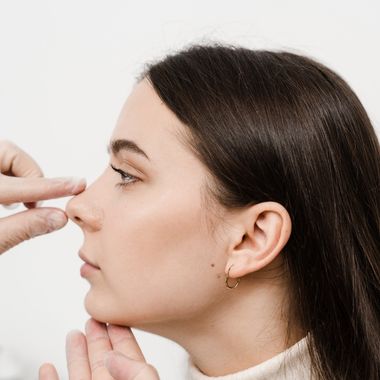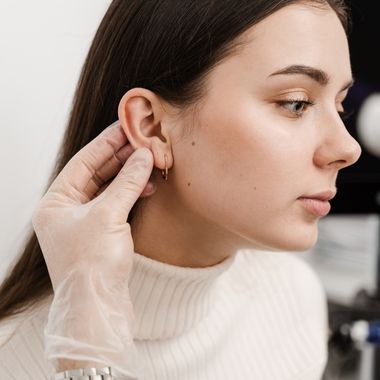Ear Nose Throat
The ENT (Ear, Nose, Throat and Head-Neck) department provides services in our hospital by using the latest technology in the diagnosis and treatment of diseases related to these areas. Our specialist doctors use modern and effective methods in the diagnosis and treatment of diseases related to the sub-sections of ENT.


Diseases Treated in the ENT Department
Hearing Loss: Congenital and acquired hearing losses.
Ear Infections: Otitis media (middle ear infection), otitis externa (external ear infection).
Tinnitus (Ringing in the Ear): Constant ringing in the ears and related disorders.
Vertigo (Dizziness): Balance disorders and dizziness complaints.
Eardrum Perforation: Perforations in the eardrum caused by trauma or infection.
Sinusitis: Acute and chronic sinus infections.
Rhinitis: Allergic and non-allergic nasal inflammations.
Nasal Polyps: Benign growths that form inside the nose.
Deviated Septum: Deviation of the nasal septum and related respiratory problems.
Nasal Obstruction: Nasal congestion and difficulty breathing.
Tonsillitis and Pharyngitis: Tonsil and throat inflammations.
Laryngitis: Vocal cord and larynx inflammations.
Reflux: Throat and vocal cord problems due to gastroesophageal reflux.
Apnea and Snoring: Sleep apnea and snoring problems.
Thyroid Diseases: Diseases and nodules related to the thyroid gland.
Tumors: Benign and malignant tumors in the head and neck region.
Salival Gland Diseases: Stones and inflammations in the salivary glands.
Lymphadenopathy: Enlargements and infections of the lymph nodes in the neck region.
Aesthetic Operations Performed in the ENT Department
Purpose: To provide aesthetic and functional improvement by correcting the shape of the nose. Method: It is performed with open or closed rhinoplasty techniques.
Purpose: To correct ear deformities such as protruding ears. Method: Reshaping the ear with incisions made behind the ear.
Purpose: To provide a more youthful appearance by removing excess skin and fat tissue from the eyelids. Method: Surgical intervention performed on the upper and lower eyelids.
In our ENT department, the most up-to-date diagnosis and treatment methods are applied in order to provide fast and effective solutions to the health problems of patients. At the same time, our patients are given a more beautiful and functional appearance with aesthetic operations.


Rhinoplasty (Nose Aesthetics)
Rhinoplasty, the most frequently preferred operation among plastic surgery, is performed to obtain an aesthetic nose that is compatible with the face and is appreciated by the person himself and his environment. Rhinoplasty improves the quality of life of patients by improving both appearance and respiratory functions.
Advantages of Rhinoplasty Surgery
Determining Expectations: Before having rhinoplasty, it is important for the person to question their own expectations and express what they want in this regard correctly.
Choosing a Doctor: By consulting an experienced doctor, the most suitable nose structure and surgical method should be decided together.
Pre-Operative Preparation: Making the preparations recommended by the doctor before the surgery is critical for a successful result.
Post-Operative Care: Regularly performing the care and follow-ups recommended by the doctor in the post-operative period accelerates the healing process and reduces the risk of complications.
Reducing or enlarging the size of the nose.
Reshaping the tip of the nose.
Correcting the hump or indentation in the bridge of the nose.
Changing the size and shape of the nostrils.
Correcting deviated septum and other respiratory problems. Correcting congenital or traumatic deformities.
Rhinoplasty Process
The patient's aesthetic expectations and needs are evaluated. The surgeon examines the structure of the nose in detail and creates a personalized treatment plan.
The surgery is usually performed under general anesthesia.
The surgeon reaches the internal structures of the nose through small incisions made in the nostrils and makes the necessary changes.
The incisions are carefully closed and the procedure is completed.
A cast or splint may be used on the nose after surgery.
Swelling and bruising will decrease rapidly within the first few weeks.
Full recovery and final results are usually visible within a few months.
Why Should OTA & Jinemed Be Preferred?
Specialist Surgeon Staff
Personalized Approach
Advanced technology
High Patient Satisfaction
What is Otoplasty?
Otoplasty is a cosmetic surgery procedure performed to correct the shape, position or size of the ears. It is usually preferred to correct the condition known as protruding ears. This surgery provides a more natural and aesthetic appearance to the ears, while also increasing the person's self-confidence.


Correction of Prominent Ears: Bringing the ears closer to the head.
Providing Symmetry: Correcting asymmetry in the ears.
Removing Deformities: Correcting congenital or traumatic deformities in the ears.
Aesthetic Appearance: Bringing the ears to a natural and pleasing appearance.
Aesthetic Concerns:
Ears protruding far from the head and forward (protruding ears).
Dissatisfaction with the shape or size of the ears.
Asymmetry or deformities in the ears.
Psychological and Social Effects:
Lack of self-confidence due to the appearance of the ears.
Feeling uncomfortable with the appearance of the ears in social environments.
Physical Disorders:
Difficulty in wearing glasses or headphones due to deformities in the ears.
Congenital or post-traumatic deformities in the ears.
Consultation:
The patient shares their aesthetic expectations and needs with the surgeon.
The surgeon examines the ear structure and creates a personalized treatment plan.
Surgery:
Surgery is usually performed under local or general anesthesia.
The ear cartilage is shaped with small incisions made behind the ear.
The incisions are carefully closed and the procedure is completed.
Recovery:
A bandage may be used on the ear after surgery.
Swelling and mild pain will decrease within the first few days.
Full recovery and final results are usually visible within a few weeks.

